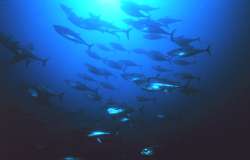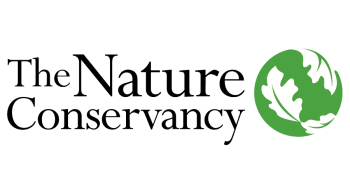Few pantry staples are more commonplace than “chunk light tuna.” Often less than a dollar for a 5-ounce can, it’s the cheapest tuna you’ll find in a grocery. Yet its journey to the canned-fish aisle winds backward through thousands of miles of highways, distribution centers, container ships, fish-processing plants, freighter ships, docks and fishing boats to massive schools of the most widely sought species—skipjack tuna, which migrate through the western and central Pacific Ocean.
There, 280-odd vessels—some of which stretch nearly as long as a football field and send out helicopters to spot schools of fish—use massive nets to catch tuna. Each year, the net-fishing fleet here accounts for most of the nearly 3 million metric tons of fish—a catch worth almost $7 billion.
“About two-thirds of the global tuna catch is harvested in the waters of this region,” says Mark Zimring, The Nature Conservancy’s large-scale fisheries director. “When you overlay that onto the region, which is a hot spot of global biodiversity, it’s causing all sorts of ecosystem impacts in this really critical stronghold for nature.”
The tuna vessels catch entire schools of fish with purse seine nets that can be hundreds of yards long and can unintentionally ensnare sharks, sea turtles and other marine life. In addition, illegal and underreported fishing has proliferated beyond the reach of the Pacific Island governments that manage the local fisheries. Now, however, shoppers in the United States have the chance to support fishing techniques that have a lighter impact not just on tuna populations but also on other fish and wildlife that are often swept up in the catch.
In 2021, a company called Pacific Island Tuna was launched to supply sustainably harvested skipjack to large grocery chains. The company, which is an independent tuna supplier, was created as a partnership between The Nature Conservancy and the Republic of the Marshall Islands, a hub of the Pacific fishing fleet. The joint venture is applying fishing practices honed over years of research and is already putting sustainable tuna on the shelves at Walmart, a leading seller of tuna in the U.S. The effort is demonstrating how the canned tuna industry can work in more transparent and sustainable ways, while also helping the government of the Marshall Islands make more money from its marine resources—money that the country is now using to provide essential services to its citizens and to prepare for the effects of climate change.
Learn more on nature.org





